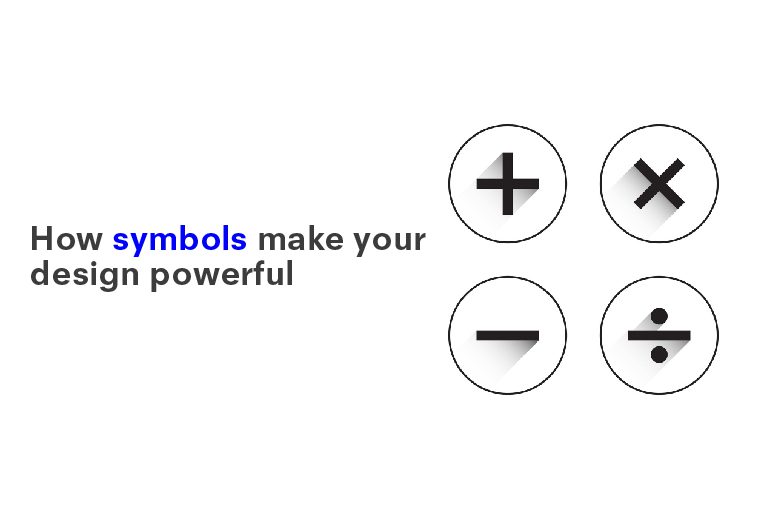In design language, symbols are a powerful tool to convey complex messages, ideas, and emotions into a simple and more visually compelling format. In visual communication and branding, they help to build a lasting impression in the minds of the consumers. They are versatile in nature and can be easy to recall plus come with the ability to evoke emotions – making them a powerful tool for designers.
When well-thought of and designed, symbols can help consumers distinguish a brand from its competitors, and serve as an identity for the brand’s values, its mission, and goals. They are essentially a powerhouse in the design community that helps brands to community their essence effectively while building a strong impact.
Also read: What is white space in design and why is it important
Symbols help to communicate and connect with your audience at a deeper level. Here are some iconic examples of how symbols when used aptly by brands in different sector have proven to build their loyal following and evoke emotions:
The Nike Swoosh
The Nike Swoosh is a great example of how a simple and memorable symbol can be one of the most powerful, famous and enduring icons in the world, especially when considered from a design and brand identity viewpoint.
Designed by Carolyn Davidson, in 1971, the Swoosh today is an iconic symbol and one that is instantly recognisable. It is a simple bold design that has a curved line resembling that of a checkmark. While over the years the Swoosh has gone under minor updates and variations, it has remained as a powerful symbol for Nike’s brand identity. It is a symbol of excellence and is often associated with high-performance sports activities. With the tagline and famous slogan ‘Just Do It’ swoosh logo has become a cultural phenomenon.
Also read: Role of a design manager in creating successful products and services
Bitten Apple logo
Designed by Rob Janoff in 1977, the bitten Apple Logo design is certainly one of the most iconic and most recognizable symbols today in the design world. This one logo is also a great representation of innovation, creativity, and quality. The symbol also reflects on the brands core values of their commitment to innovative technology, user-friendly design, and exceptional quality.
The logo is versatile enough and simple indeed that it can be easily adapted into many design elements that includes packaging design, ad campaigns, branding materials and product logo placement – while still holding its core iconic identity.
Electric circuit T for Tesla
Another strong symbol in the design world, the Tesla logo was designed by CEO Elon Musk and his team in 2003. The logo has a curved T line on the top and is a symbol that represents simplicity and elegance. It is a minimalist yet modern design that sends out a message of innovation, sophistication, and environmental consciousness – all values of the brand.
The T essentially resembles an electric circuit design which is also a reflection of their focus on electric vehicles and renewable energy. The symbols sleek and modern design is also a direct reflection on its luxury and high-performance offerings conveying a sense of futuristic technology and innovation.
Also read: The growing opportunities in motion design
Adidas three stripes
Synonymous with the brand’s identity and its core values, the Adidas three stripes were first introduced in 1949 by Adi Dassler. They were intended to provide extra support and stability to the brand’s footwear. Growing from being more than just a functional design element, today these three stripes also represent Adidas’s commitment to quality, innovation, and performance.
Their simplicity and versatility make them a strong design symbol. They are easy to adapt and be incorporated into several different design elements like patterns, textures, graphics and still hold and maintain the core iconic identity. These stripes today are also a badge of honor for many sports enthusiasts around the world.
Mastercard
Designed by Robert W. Selander in 1966, the Mastercard logo is another strong symbol that features overlapping circles of red and yellow. The logo today is synonymous with trust and reliability in the payment solutions sector where it is widely accepted and recognized around the world.
The symbol also holds the brand’s values of connectivity, security and inclusivity. The overlapping circles reflect the brand’s focused commitment to connecting people and businesses while also representing the brand’s focus on secure and inclusive payment solutions. The logo truly offers a message of trust and reliability along with a sense of modernity and innovation.
Also read: How e-commerce and consumer goods brands are using multilingual design
BMW
Designed by Frank Josef Popp, the founder of the company in 1917, BMW logo is a circular blue and white design with the letter BMW written at the centre. The symbol is a minimalist and modern take on the traditional coat of arms, bringing out a sense of sophistication and tradition while also reflecting the brands focus on quality and precision engineering. The white and blue colours represent the Bavarian state of Germany where BMW has its HQ and have today become synonyms with a sense of elegance, refinement and high-performance luxury driving.
Their circular design represents the brand’s focus on forward motion and progress, pushing the idea of a sense of unity and continuity that is essential to the BMW group.
Many other symbols like the Olympic rings, AUDI rings, FedEx arrow, RollsRoyce and more have become iconic, easily recognisable globally and power designs that represent a story on how brands must focus on building something simple, yet unique to their overall offerings. These symbols are key to instant recognition, building an emotional connection and becoming a universal language for collaborations and connections amongst other things.






Want to Become a Designer ?
Strate is a unique design school that nurtures your talents as a designer by offering state-of-the art designing courses in Bangalore.
Join Strate